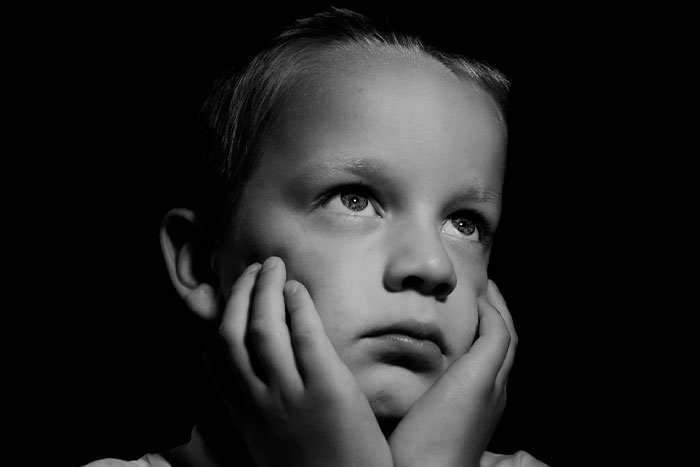Imaginary friend

Imaginary friends do not appear of our own free will. They invite us. And we stay as long as they need us. And it is only at that moment that we leave. "Crenshaw, the invisible cat" (2015), Katherine Applegate.
Imaginary friends are part of the world of children and, far from being a worrying aspect, they are synonymous with the development of a healthy mind. The cognitive skills that begin to emerge in a 3- to 4-year-old child allow him to think intuitively.
“At this stage of development, according to Jean Piaget, the child graduates his capacity to think symbolically; it imitates behavioral objects, symbolic games, drawings, mental images, as well as the development of spoken language ”, affirms the child psychiatrist Christian Muñoz Farías.
It is there when he gives life to his fantasy worlds, in which he establishes dialogues with monsters that are under the bed or behind the closet. Your friends can be heroes, animals, ghosts, giants, strange creatures or human beings with special characteristics.
Although he seems to lose himself in his fantasies, Muñoz points out, these imaginary beings are his way of exploring reality; In addition, they help you solve dilemmas. Another aspect in its favor: throughout the day, adults restrain the infant in various settings (do not touch, do not eat that, be careful you fall) and it is constantly subject to receiving orders and reproaches. Your imaginary friend, on the other hand, is at your beck and call.
The fact of having an imaginary friend does not mean that the child is destined for loneliness. On the contrary: he likes to socialize and when no one is available in real life, he just makes it up. Some studies show that infants who have it show greater ability than their peers to observe things from the perspective of others; they even score higher on language tests, play better, and have more friends.
Parents can get involved in their child's play and accept the existence of that fantasy friend. This favors the child's imagination and, in one way or another, keeps him connected to reality. If they ask you questions about that playmate, you are implying that your companion is under control. They know that this is part of their imagination.
Through the imaginary friend the children:
- They release their positive and negative feelings
- They project their conflicts, fears and phobias in the face of new situations, such as having to abandon the diaper, go to daycare or change homes.
- They will feel stronger, and capable. And that will help your self-esteem.
- They will better control their emotions.
- They develop social skills.

When a friend goes...
An imaginary friend should not be a cause for concern if he begins to disappear around the age of seven or eight, at which point the child's fictional thoughts begin to become private. This particular friend is a symptom of personal and creative development, normal in some children in the early period of their life, which, although it may in a certain way reflect a possible lack of socialization or the need to spend more time with those who love them, it is solved on his own as soon as he begins to participate more frequently in games and other social activities with real friends of his age. It must be borne in mind that there comes a time when parents cannot replace the need to play and interact with children of their age, which will gradually make their imaginary friend disappear.
The causes that lead a child to have an imaginary friend can be very diverse, for example, they can constitute a means of escape to loneliness, hatred or anxiety. It is therefore important to discover their motivations. Juan Pedro Valencia considers that this imaginary friendship can be a cause for concern when “the presence of the imaginary friend lasts beyond the normal age or, instead of being a channel of expression of emotions and feelings for the child, that otherwise They would be difficult to solve for him, it becomes a way to avoid assuming responsibilities, avoid contact with reality or lose interest in being with his friends, preferring to do it only with those imaginary friends. So we must investigate, even with the help of a professional, what is happening in the child for this to be so ”.
When does the imaginary friend become a concern?
If they notice that the child has become withdrawn or has acquired aggressive behavior because of a violent imaginary friend, they should seek help and support from a specialist. Situations like these could generate other problems. For the rest, there are no reasons to be alarmed. The child does not suffer from mental problems, nor does he live supernatural situations. The child is healthy. In the same way that imaginary friends arrive, they leave and disappear with time. It is a stage that usually ends around 7 or 8 years of age, when the child has highly developed language, logic, memory and intelligence functions.
How to act?
- Supports the child's imagination, but does overdo it.
- Make him understand that his actions have consequences that he must bear.
- Encourage their creativity. Invite little friends over to your home and allow them to visit other children's homes as well.
- Let him choose what he wants to do in his free time.
- Help him develop play activities where he has an active participation and does not let him spend many hours in front of the television in a passive attitude.
- Offer items that develop their creativity such as play dough, pencils, watercolors, sheets of paper, puzzles, etc. Instead of giving him a bunch of toys.
Clinical perspective of AI
The creation of imaginary friends by children (AI) is a phenomenon that began to be studied in the late nineteenth century. The psychiatric community at this time analyzed the interesting phenomenon of AI in institutionalized children. These mental health professionals observed with special attention the capacity of children to assume the reality of abandonment and create mechanisms of psychological compensation for loneliness (Bender and Vogel, 1941).
These children, as Votrovski (1895) pointed out, created characters for three reasons:
Yhe first was related to compensation for the emotional deficiencies they suffered. Most of the studies were conducted in populations of orphaned children living in religious or state protection institutions, where large numbers of children with AI were found.
A second explanation of the creation of AI by children was related to the need to build more powerful, intelligent characters and with abilities that compensated for the weak and defenseless characteristics of these children. Finally, it was explained that children created AI as a way to avoid responsibility for certain mistakes they made. In this case, the children used their AI as scapegoats where they deposited responsibility for some of their acts reproved by the adults.
In this vein, the children who create AI are far from being
Classified from pathological categories, on the contrary, studies have shown that the existence of imaginary friends in children can be related to positive characteristics in the social or intellectual framework rather than to affective deficiencies or cognitive disorders. There is still much to know about this fact that, although it should not be classified as exceptional, it is very striking and interesting within the great framework of reference of development.
Bibliography
Sources: Juan Pedro Valencia. Psychologist. PSYSTEL
www.saludactual.cl
www.guiainfantil.com
www.todopapas.com
www.abcdelbebe.com - Colombia
Lic. Yessi Castillo - Child psychology
"Nanny Heart - The plus of mom your child needs"
- Details
- Hits: 1004
© Nanny Heart 2022 - Website design MGF Creative Solutions. - Políticas de cookies y privacidad


